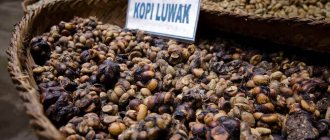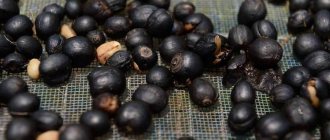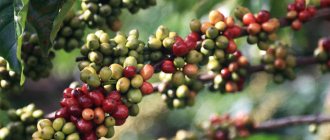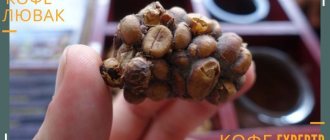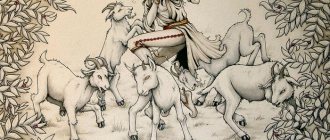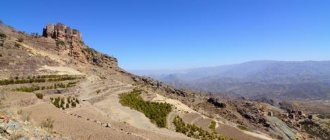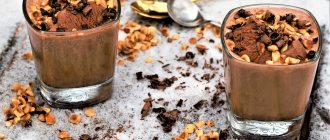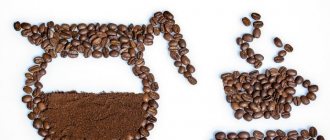Chon Kopi Luwak is one of the most expensive types of coffee in the world. Having tasted this amazing product in your homeland, you will certainly be interested in the history of the magnificent drink. Connoisseurs of a truly exquisite product decided to get acquainted with the method of preparing Vietnamese Chon coffee. By visiting Balinese plantations and festivals, you can purchase several varieties of this amazing product.
Drink lovers claim that the taste of Luwak coffee cannot be compared with another. This product is the calling card of the country, so many tourists buy coffee and bring it back as a souvenir. A balanced combination of aroma with notes of cream, cocoa and caramel creates a unique sensation. Therefore, drinking this drink is just a pleasure. In order to spend the day in a good mood, you need to prepare an invigorating drink following the recommendations of the Vietnamese.
The history of delicious Luwak coffee is quite interesting. A unique variety of coffee is extracted from wild regions in Vietnam called BUON ME THUOC. For the successful growth of the unique variety of Kopi Luwak, special natural conditions are required. The product is collected manually. In fact, this type of coffee, made from the droppings of the Luwak animal, is only collected in the wild.
The difficulty in obtaining chon coffee lies in finding it. The number of plantations where the Vietnamese coffee variety grows is about 500,000 hectares. Large areas in Dalat have been specially allocated for plantations. The mountainous area is known for its large fields.
The history of the discovery of the most expensive coffee drink
It all started on the island of Sumatra. Several centuries ago, it was one of the territories used by the colonialists. At that time, they imposed a large tax on local residents for the supply of coffee. So people had to flush out the coffee beans from the droppings of a pest animal called luwak, which is similar to a lemur.
Over time, residents noticed that a drink made from grains that had undergone a fermentation process in the stomach of a rodent turns out to be refined and unusual in taste. It was then that the variety of this coffee with the Indonesian name “kopi luwak” was born, which today is rated quite highly. Interestingly, this industry subsequently brought people out of the crisis.
An animal in whose stomach grains undergo a fermentation process is called luwak.
The special taste of kopi luwak and its characteristics
The most expensive type of coffee is obtained by passing the beans through the digestive tract of the palm civet, also called musang or luwak. After the coffee fruit (cherry) enters the animal’s body, the pulp is digested. Digestive fluids have little effect on grains. The product used in production leaves the body along with feces.
Coffee made from animal feces has a chocolate or caramel flavor. The bitterness of the drink is given by civet, a special enzyme secreted by the glands of the anus of the musang. Kopi luwak coffee gets its special taste thanks to the enzymes found in the civet’s stomach.
Such luwak can be prepared artificially. To do this, the grains are sprayed with civet obtained in the laboratory. Luwak coffee made from poop is faked by adding flavorings and flavorings. However, a connoisseur is able to identify a fake or artificially obtained drink. The taste of the product is influenced by coffee varieties, the best of which is Arabica.
How is Luwak coffee made?
Collecting coffee beans from droppings in the wild is not relevant today. This is too time-consuming and labor-intensive a process for mass production. Therefore, animals are bred on farms.
People catch rodents and put them in cages. For six months they are fed green grains, collecting feces, excrement and excrement. This is how long it takes their stomach to produce the necessary enzymes.
In simple terms, the rodent eats and then poops out fermented coffee beans.
A Luwak eats up to one kilogram of coffee per day.
Next is the processing process, which includes the following steps:
- assembly and thorough cleaning of raw materials
- rinsing with water
- drying poop
- special roasting at high temperatures
Vigilant monitoring is also carried out over the cleanliness of the animal’s cage: they are regularly cleaned, washed, and ensured that there are no foreign odors.
Origin
The birthplace of the unusual type of Luwak coffee is Indonesia. Luwak is also produced in Vietnam. Musangs involved in the production process live in the wild or on special farms. Civets do not breed in captivity. For this reason, farm owners are forced to catch the animals. Musangs quickly become tame, but at night they can become aggressive.
To get 50 g of product, the civet must eat at least 1 kg of berries.
During the day, the animals most often sleep and practically do not eat. Feeding is carried out in the evening. The enzyme civet is produced in the body of musangs only 6 months a year. In order not to contain animals for the remaining time, farm owners release them into the wild.
The civet is a small animal. It cannot produce large quantities of coffee. Other animals can be used to produce the product on the farm: rabbits, elephants, porcupines, etc. However, the coffee obtained from them does not meet established standards due to the different composition of digestive fluids. For example, fruits fed to elephants do not receive the necessary enzyme treatment due to the animal's refusal to accept coffee in its pure form. Farm workers are forced to mix fruits into food in small quantities.
Interesting! How is Americano coffee different from espresso?
How is it different from regular Arabica?
If you compare these two types of coffee, you can find differences in a variety of areas.
The first, of course, is the method. For Arabica beans, a standard technology familiar to everyone is used. In Kopi Luwak there is an unusual and at first glance strange method. All other opposites follow from this.
Luwak is characterized by a variety of flavors and a caramel-chocolate aroma.
For example, the first of the drinks has a fairly strong strength, tart aroma and taste. The second one is characterized by a variety of flavor shades and a caramel-chocolate aroma.
In terms of strength, Luwak does not reach the level of Arabica, which for some coffee lovers was a pleasant discovery. And the most important thing is the price. Luwak coffee is called the drink of the Gods. And already in this one can see the high cost, especially when compared with the familiar Arabica.
How the variety is grown
Two types of fermented gourmet Luwak coffee are grown in the mountainous region. Among them are Arabica and Robusta. Other varieties of the product are grown only in small quantities. Arabica is produced in the northern part. This area is known for cool and dry climate conditions. Robusta requires high humidity and high temperatures to grow. The rich taste of Robusta differs from other varieties of Vietnamese coffee called Chon. Arabica with a caramel tint gives off a slight acidity. Therefore, this type of coffee is usually used in the preparation of various mixtures.
How does it affect the human body?
Drinking the drink affects the central nervous system. So one cup of Luwak coffee can increase a person’s productivity by 10-12%. This fact was confirmed by the American College of Sports Medicine research center.
Coffee also helps with your figure. The drink discourages cravings for foods that contain a lot of calories, and the caffeine itself helps fat cells break down faster.
Drinking coffee also stimulates brain activity.
The product itself does not make a person smarter, it “awakens” the intellect and pushes it to work.
It also has a positive effect on the immune system: the drink relieves inflammation and prevents infection from entering the body. So the positive effect of Luwak coffee on a person cannot be underestimated or ignored.
Luwak can increase human productivity by 10-12%
Coffee prices
The price of Luwak coffee reaches $1,200 per kg.
In the Vietnamese town of Dalat, such coffee can be found for 250,000 dong per glass. In other countries, the price of this coffee ranges from 250 to 1200 dollars per kg.
How much does coffee cost? The question is quite common, but it is not easy to answer. There are a lot of manufacturers, and the varieties are also varied. And the price for products of the same brand, albeit slightly, may differ depending on the specific place of purchase. But don’t worry, you will definitely choose your variety, which will be ideal in terms of price and quality. You won’t meet a tourist who hasn’t brought coffee from Vietnam, either out of love for the drink or simply as a souvenir.
And if you've been wanting to try exclusive Luwak coffee, you may have to spend a little money. However, imagine how bright that moment will be when, on a gloomy autumn morning, its amazing aroma, albeit for a moment, will return you to sunny Vietnam.
Contraindications
It is not recommended to drink the drink for those who suffer from high blood pressure, insomnia, glaucoma, kidney failure and a number of other diseases. Of course, this does not mean that you need to completely stop using it. It must be kept to a minimum. Since coffee contributes to a sharp increase in cholesterol levels, it is contraindicated for those who already have this indicator above the norm.
The vast majority of any coffee drink causes physical and psychological dependence, so it is better not to abuse Luwak coffee, even for a healthy person.
Varieties and cost
Coffee leftist is not the only one of its kind. Black Ivory is extracted and produced in a similar way. The difference is that fermentation occurs in the stomachs of Indian elephants. The cost of this coffee starts at $1,080 per kilogram. One small serving of coffee in restaurants costs $50.
Black Ivory is extracted and produced in a similar way.
The next similar exotic product is the Jacques Bird coffee variety. Made in Brazil. In this case, the grains undergo initial processing in the stomach of the birds. At the same time, Brazilian farms use an organic method of farming, that is, they do not lock birds in cages, but recreate conditions for them that are as close as possible to wild ones. Prices start at $430 per kilogram.
Another variety is Coffee Terra Nera. It is made using palm civets. The quantity of this coffee is limited. You can find it only in one place: in a coffee shop in London. The cost exceeds $1,500 per kilogram.
Where to buy
Since coffee is popular among connoisseurs and has a high cost, some manufacturers counterfeit the product in order to get the greatest benefit.
No one would want to spend money on a fake, so to avoid any deception, it is better to go to the official website of the brand manufacturer. And now order coffee directly from him.
It is better to avoid intermediaries in the matter of purchasing, since many are greedy only for receiving benefits alone.
If you follow this simple rule, you will never come across fake Luwak coffee, since the manufacturer carefully monitors the production process.
The original country of production of Kopi Luwak is Indonesia.
Cost in Russia
In Europe, the price increases: about $400 per 1 kg, and in retail a pack of elite coffee costs $100 - $120 per 100 g. Russia is no exception. In ruble equivalent, for 1 kg of grains you will have to pay 26 - 35 thousand, and for 100 g - 3 - 4 thousand rubles.
A product cheaper than 3,000 rubles per 100 g should raise concerns: most likely, these grains were chemically processed and have nothing to do with natural Kopi Luwak.
How to cook Vietnamese properly
To prepare you will need: Luwak coffee beans, filter press, coffee grinder, water. First you need to prepare all the ingredients: boil water and grind the grains (the grinding should be medium).
Next, you can begin the cooking process:
- Place the filter press over a cup into which the finished drink will flow
- Pour ground coffee into the device and compact it
- Pour some water into the filter press. Then wait 30 seconds and add the remaining water
- Wait until all the liquid passes through the coffee
When preparing Kopi Luwak in Vietnamese, a French press or fin is used.
Afterwards, the drink can be consumed immediately. If desired, you can place the cup in a container of hot water before starting cooking. In this case, the coffee will not be very cold, because preparing the drink using the Vietnamese method takes a long period of time.
Method of preparing the drink
Many people wonder how to properly brew Kopi Luwak coffee? To prepare a refined and invigorating drink, the Vietnamese usually use a traditional coffee filter press. This is the most common method for brewing cha pe Chon coffee. Take a small amount of condensed milk and pour it into the bottom of the mug. The upper part is covered with a metal filter called fin. Add some coarse grains inside. Then you need to press the press and pour boiled water.
After obtaining a thick concentrate, you will need to remove the filter. Since the mixture obtained after cooking drips through the grate for several minutes. After completing the procedure, remove the filter and add hot water to the cup.
Some people prefer to use ice cubes and drink the drink cold. As you already know, Kopi Luwak is the most expensive coffee in the world and at the same time has a rather pleasant mild taste. When manufacturing products, special attention is paid to the mechanism itself. After all, this process can have an impact on taste. Therefore, only ripe fruit is selected for feeding the animal. Chon animals are bred in special farms for the purpose of business development.
How to cook in Turk
Ingredients needed: coffee beans, water, coffee grinder, coffee grinder. It is necessary to grind the grains immediately before cooking. It should be taken into account that no more than 1-2 tablespoons of powder are placed in the Turk.
In order to brew a drink in this way, you need to put ground grains in a Turk and fill them with raw water. Next, you need to place the container on low heat on the stove.
You shouldn’t leave the coffee while cooking; on the contrary, you need to stir it periodically and watch it so that it doesn’t boil over.
As soon as the foam starts to rise, you need to wait until it rises to the very edges. After the Turk is removed from the stove. It is best to repeat the process 1-2 times.
Luwak coffee has an exquisite caramel-chocolate taste and aroma, despite the fact that the beans are processed in an original way. It can be served in combination with ice cream or milk. For those who like more tart additives, you can use spices, which include cinnamon, cardamom, lemon and a number of others. That is, you can use various favorite additives that will suit the drink at your personal discretion.
